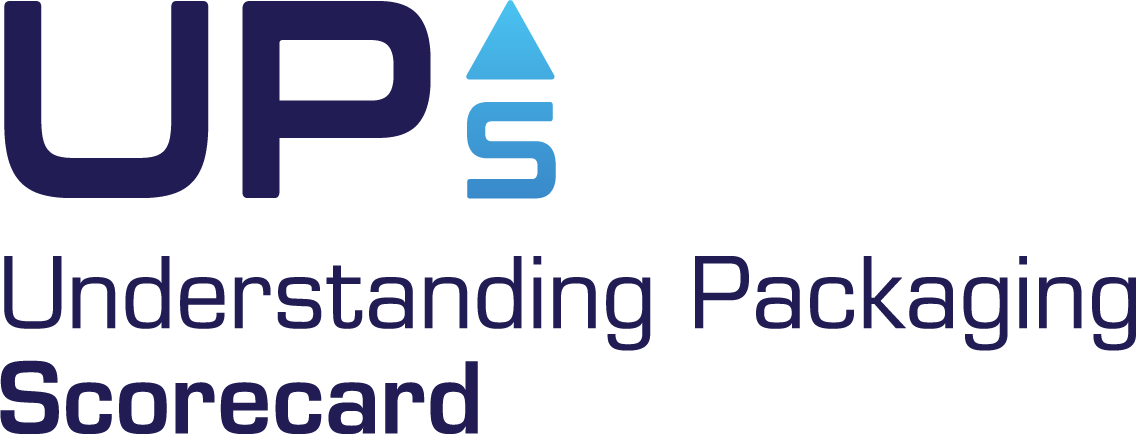The Chemicals of Concern (CoC) metric within the UP Scorecard is fundamental to helping choose foodware and packaging without chemicals of concern. An important component of this metric is the FCOC List, a first-of-its-kind, harmonized list of chemicals of concern that guides users away from known hazards and encourages them toward safer chemistry in foodware and packaging. The FCOC List isn’t only valuable within the UP Scorecard. No matter whether you’re a food service company, retailer, restaurant, food brand, or foodware/packaging manufacturer, the FCOC List can be a helpful stand-alone resource in prioritizing which chemicals of concern to look out for and take action on in your own operations. This blog introduces why and how the FCOC List was created, and it provides some examples of how you can make the most of the FCOC List.
Why are some chemicals in foodware and food packaging a concern?
Recent scientific research shows that toxic chemicals in foodware and food packaging can cause harm to humans and the environment. Over 12,000 different chemicals are known to potentially be used in the production of different food contact materials (FCMs). This can include chemical additives that are used intentionally in many materials to improve performance, with an unintended cost of adversely impacting human and environmental health. These chemicals can also hinder circular economy goals, perpetuating chemical contamination when materials are composted, recycled, or incinerated at end of life.
With increasing awareness of the adverse health and environmental implications of foodware and food packaging, comprehensive legislative and regulatory changes are beginning to materialize, such as adopted bills in the US states of Washington, California, and Maine. Information about many other recent and upcoming state regulations addressing chemicals in food packaging is provided by Safer States. Multiple new regulatory initiatives are also underway in Europe within the EU’s new Chemicals Strategy for Sustainability. The voluntary actions taken by companies now will help them stay ahead of legislative and regulatory requirements and be perceived as leaders in the industry.
What is the FCOC List?
The FCOC List was created to consider the impacts of chemicals of concern within the UP Scorecard. It includes chemicals that should be eliminated from intentional use during manufacturing and related processes in the supply chains of the food processing, food packaging, and food service industries. Chemicals are grouped into a progressive path where Tier 1 presents a shortlist of chemicals of concern to avoid, and Tiers 2 and 3 build on one another providing more extensive (and more protective) lists. Within the UP Scorecard, a product can receive an increasingly better score by confirming it does not intentionally contain any of the chemicals included within Tiers 1, 2, and/or 3.
These tiers were established based on research and market-validated information provided by leading NGOs and industry associations including Environmental Defense Fund (EDF), the Food Safety Alliance for Packaging (FSAP), and the Food Packaging Forum as outlined in Table 1 below. For more details about the motivation behind addressing chemicals or how the FCOC List is used within the UP Scorecard, see the Chemicals of Concern section within the scorecard’s methodology document.
Table 1. The three tiers of chemicals within the FCOC List along with the origin list(s) developed by leading NGOs and industry associations used to determine the chemicals included
| FCOC List Tier | Origin list of chemicals included |
| Tier 1 | Chemicals of concern identified by Environmental Defense Fund (EDF). EDF identified chemicals in food packaging and food handling equipment where the potential health impacts from their migration into food raise serious concerns. |
| Tier 2 | Chemicals of concern identified by the Food Safety Alliance for Packaging (FSAP) brand owners’ working group document that have been screened against the Food Packaging Forum’s Food Contact Chemicals database (FCCdb) for relevance. |
| Tier 3 | Chemicals of concern identified as one of the 608 priority chemicals in the Food Contact Chemical database (FCCdb) developed by the Food Packaging Forum. |
The FCOC List is not intended to replace legal and regulatory requirements that must first be followed for food contact materials. In many cases, the FCOC List goes beyond current regulations to help users stay ahead of emerging consumer concerns and potential future regulations. While avoiding these chemicals of concern cannot alone guarantee that a foodware or food packaging product is safe, it is nevertheless a meaningful and cost-effective place to start.
How can the FCOC List be useful outside of the UP Scorecard?
While the FCOC List is already implemented directly into the UP Scorecard to help companies compare and choose the safest packaging options (see this earlier article for an introduction and guidance), it is also a stand-alone resource that can be used by companies across the food value chain.
Some examples of uses for the FCOC List depending on the objectives of the user could include:
- Communicating to suppliers a base level, required level, and/or aspirational chemical management goal based on the tiered lists of chemicals of concern
- Setting expectations within your supply chain about transparency, disclosure, and verification
- Building an inventory of what is known and not known in your supply chain and tracking use reductions over time
- Providing consistent and aligned messages with a peer organization to a shared supply chain
When implemented consistently across the industry, these activities can also send a strong and consistent demand signal up the supply chain for safer materials that foster packaging circularity. For instance, the FCOC List can be adopted as an industry-wide restricted substances list, or RSL, for improving food packaging broadly. The concept of using an RSL is not new. Hazardous chemicals have been systematically eliminated from other product categories using harmonized RSLs. A few widely used examples can be found in the apparel and footwear sector such as the Affirm RSL and the ZDHC Manufacturing RSL. Industry-wide RSLs help an industry rapidly transition to safer chemistry while easing the reporting burden on the supply chain.
The FCOC List is available for use as a freely downloadable spreadsheet that can be further filtered and sorted as needed. You are welcome to access, share, and make use of the FCOC List. SUM’D owns the copyright of the FCOC List, so please properly cite the original source including the document’s DOI. We also ask that you do not republish the list on other websites or use the UP Scorecard or SUM’D logos without written permission from SUM’D.
Have any feedback, ideas, or questions?
Do you have any constructive and evidence-based feedback on how we can further improve the FCOC List? Or maybe you have had success in using the FCOC List within your own work to start addressing chemicals of concern? If so, we would love to hear about it! Fill out our feedback form or get in touch with us via email.
Special thanks to the other members of the CoC metric working group within the UP Scorecard for their support in developing this article: Anna Soehl (Green Science Policy Institute), Boma Brown-West and Cassie Huang (EDF), Jane Muncke (Food Packaging Forum), and Stacy Glass (ChemFORWARD).




